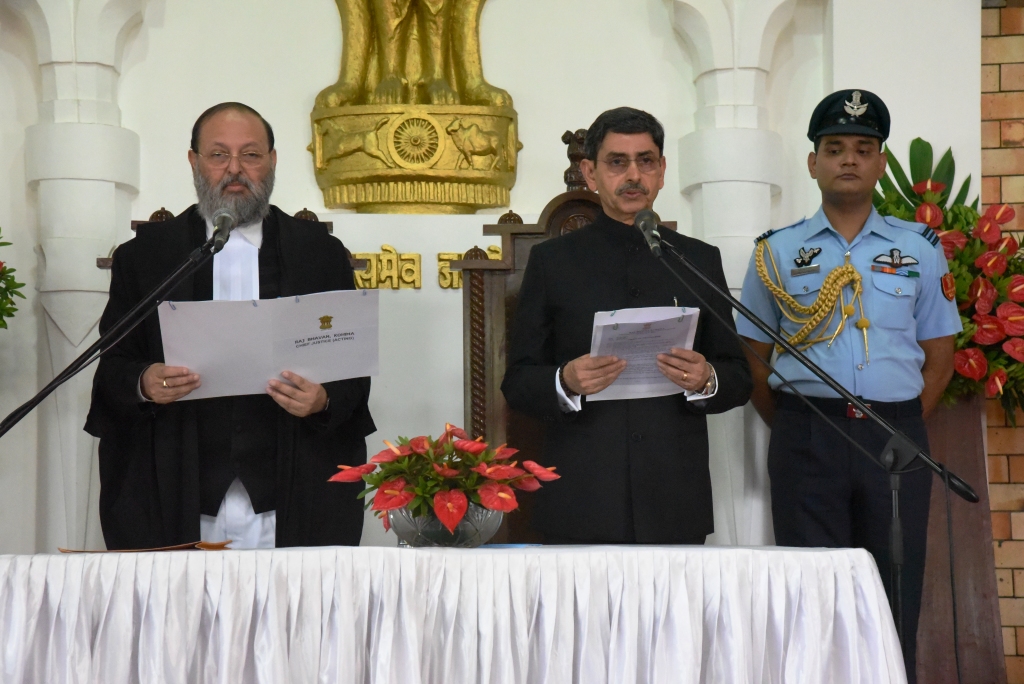Naga Republic View
Having the RIIN may help create a data base of some sort but it is certainly not the real answer to tackle the menace of illegal immigrants or even of fake indigenous certificates. The solution lies in ending all forms of corruption and improving our governance. Bringing the RIIN at this juncture may also complicate the situation and further delay the implementation of the ILP as suggested by the Abhishek Singh committee.
The fact that the government notification dated 29th June, 2019, to give effect to the Register of Indigenous Inhabitants of Nagaland (RIIN), has yet to take-off, instead seeking public consultation on what is an intricate matter of identity, rights and customary law, the best course would be to defer the idea of RIIN for now or atleast make sure that any delay in completing the RIIN should not come in the way of putting in place the new proposed system and ensure that no illegal migrants can enter.
One argument being put forward in the ongoing public debate is that the RIIN is required to enforce the Inner Line Permit (ILP) and that its implementation would be meaningless without the RIIN. However this may not necessarily be the case. We believe the two can be de-linked. The ILP was always there from before but could not be strictly enforced and monitored by the government.
Previous to the Abhishek Singh Committee, we had two other committees in 2016 and 2017 headed by knowledgeable Naga IAS officers. They were the Sentiyanger Committee and Kesonye Yhome Committee. Both committees did not go into the subject of having the RIIN but nevertheless gave strong recommendations to strengthen the ILP system. However the government never cared enough to implement these.
It is unfortunate that the priority and initial focus on strengthening the ILP system has been unnecessarily diverted by the contention over RIIN. Without wasting time, the other substantive part of the Abhishek Singh Committee report should be implemented. This includes the recommendation for a robust online system to issue, monitor and track ILPs and also a permanent ILP committee in the Home Department.
Further, the views of Commissioner, Nagaland (made to the Abhishek Singh committee) is worth revisiting.
According to the Commissioner, if at all ILP is extended to cover the whole of Dimapur, one of the mechanisms that could be considered is to “first identify the Non-Naga indigenous inhabitants and issue them with special cards or by whatever nomenclature it may be termed…”
It is obvious that the commercial hub of Dimapur is the real problem when we talk about the threat posed by illegal immigrants. So instead of undertaking a long and sensitive exercise that may lead to more question than answers, if the problem area of Dimapur can be first targeted and tackled on an emergency basis.
The Joint Committee for Prevention of Illegal Immigrants (JCPI) has been urging the Government to notify extension of BEFR, 1873 to cover the entire administrative jurisdiction of the state including Dimapur immediately. Even if the RIIN goes ahead, the work on a robust online system to issue, monitor and track ILPs should start without delay.
The government should also take note that an important consensus seems to have emerged. That an exercise like RIIN, to determine citizenship of the indigenous inhabitants, is best left to the wisdom, knowledge and tradition of the respective village republics.
One idea is to let every village in Nagaland, under the supervision of their respective tribal hoho and apex church body, list out the names of all its citizens. Based on this first draft list, further steps can be taken to compile the main register.
In fact, each village, irrespective of tribe, has its own register of indigenous inhabitants. Even outside the village, the respective village union/s in places like Kohima, Dimapur, Tuensang, Mokokchung, Zunheboto, Wokha etc maintain a register of members.
To conclude, the recent discourse over the Citizenship Amendment Bill (CAB), Article 371 (A), the proposed exercise of creating the Register of Indigenous Inhabitants of Nagaland (RIIN) or even the Naga peace talks, cannot be seen in isolation to each other. All of them are linked somehow to the bigger picture of safeguarding the time tested culture, tradition and rights of the Naga people.
The Naga Republic (http://www.thenagarepublic.com/) is an independent journal of news, opinion and research run by senior journalist Along Longkumer







 The Top Viral YouTube Videos of 2017
The Top Viral YouTube Videos of 2017 Meet R.N. Ravi, who is mediating peace with the Nagas
Meet R.N. Ravi, who is mediating peace with the Nagas What Does Your Face Say About Your Health?
What Does Your Face Say About Your Health? The last Konyak headhunters of Nagaland
The last Konyak headhunters of Nagaland










Leave a Reply
Your email address will not be published. Required fields are marked (required)